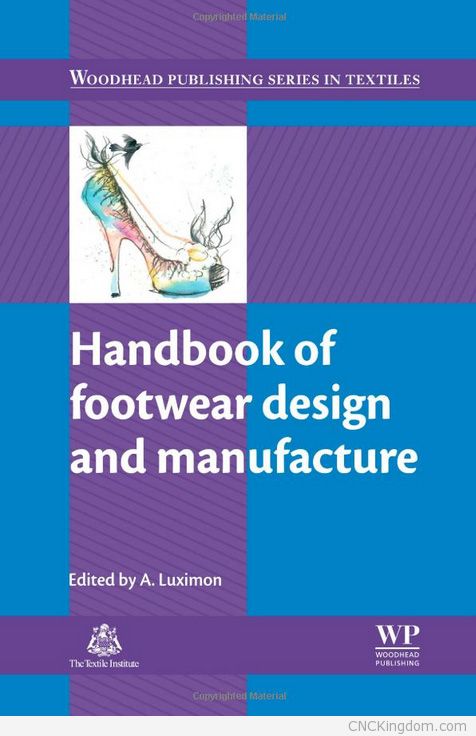Ameersing Luximon: Associate Professor at The Hong Kong Polytechnic University (Hong Kong)
Dr. Ameersing Luximon is an Associate Professor in the Institute of textile and clothing at The Hong Kong Polytechnic University where he shares his passion for Footwear Design, Human Factors and Ergonomics, Digital Human Modeling and Biomechanics.
You can contact him by visiting http://www.itc.polyu.edu.hk/en/people/academic_staff_profile.html?id=4028e486299b4aea0129a045b2650012
You’ve achieved a lot of success in globally while researching within your field, what is it about footwear and ergonomics that keeps you so passionate?
 First I did not plan to do research on either footwear or ergonomics. It all started after I completed my MSc which was related to system engineering and involved lot of stochastic modeling. I did not want to do my PhD in a field, which is very mathematical; I wanted a research area which has some level of experiments and some mathematical modeling.
First I did not plan to do research on either footwear or ergonomics. It all started after I completed my MSc which was related to system engineering and involved lot of stochastic modeling. I did not want to do my PhD in a field, which is very mathematical; I wanted a research area which has some level of experiments and some mathematical modeling.
I chose ergonomics because the supervisor was strong in this area. Later my supervisor inspired me to take footwear research. From that time I have been doing research in footwear. It is nearly 17 years.
The more I research on footwear and ergonomics, the more I feel I know less about it. There are lot of missing information and more research is needed. The foot is extremely complex and mathematical models of foot is rather simple. Hence we cannot make perfect footwear, when we do not even know the foot well. Different sports, culture, injuries and illnesses add to the complexity of the problem. It make me feel very happy to increase our understanding of ergonomics, foot, and footwear.
Before becoming an assistant professor of design at Hong Kong Polytechnic University, you were a general manager for Xlscan which provided software and systems for footwear including scanners. What did that experience teach you and how did it make you a better professor? Are there any aspects of corporate life that you miss working so much in the academic world now?
The industrial experience is very important. It makes people look at research areas in a practical and commercial way. Industrial experience enabled me to get consulting projects, industrial collaboration and industrial research projects while working in academia. BTW, I just promoted to associate professor of design at the institute of textiles and clothing, the Hong Kong Polytechnic University. I managed to commercialize 2 research projects. The companies who bought the patent right are working on making a commercial product. It is extremely important to do theoretical as well as practical research. I am working with several companies, mostly in foot and footwear related projects.
You wouldn’t think there would be that much innovation left in the footwear business – we’ve been wearing “shoes” probably longer than humans have been wearing cloths. The materials and production systems may change but what’s left to figure-out? Where is the field of footwear ergonomics headed?
Well, when I started I also thought the same way. Bear in mind that I have an undergraduate degree in Electrical and electronic engineering. Also in my masters, my research focused in high speed computer networks. My first job in 1993 was in a mobile phone company. So going to footwear may seem very strange. But once I started to look at the problems related to footwear, I found out there are many problems. The foot problems are hidden in “shoes” and since we tend to pay more attention to our face, the foot problems are somehow neglected. The foot is like a building foundation. If it is not good and strong, one will have pain. Most of the time people will suffer silently without telling anyone. The foot may be slowly deformed, because the molding process is slow and hence most people do not pay attention to the slow painful process. The majority of elderly have foot problems. This reduces mobility and may results in other health problems.
When people started wearing shoes, the shoes were mainly functional. They wore it to protect against cold or rough terrain. Also mostly, it was made of bearable natural materials. In addition, the floor was snow, mud, grass, and soil – these are relatively “soft”. Now if we live in the city, we are surrounded with hard concrete floor, which can affect foot-cushioning ability. In addition, most shoes are made of synthetic materials, which may not be breathable and affect the in-shoe microclimate seriously. Moreover, in the old time, each individual shoe may be custom build for each person. After industrial revolution, we have mass produced shoes. This implies that the fit will be compromised, since we are not making individual shoes with the best fit. On the other hand there are companies claiming about all types of footwear technologies without any formal proof. These sometime lead to “over confident” behavior in people and athletes (such as jumping harder thinking that the shoe is actually protecting them), leading to foot injuries.
Even if we do not do sports, wearing shoes for very long time in hot and humid places causes skin infections, such as athletic foot. Of course, this is a a major problem among athletic, that why we have this name. Without even mentioning the impact due to fashion, we can see so many problems and it all affect foot health.
In addition to normal foot, some people are born with foot disabilities such as club foot. This is widespread in developing countries. Treatment involves casting, and corrective shoes. The best treatment method is still questionable. For people with diabetes, the foot may lose the sense of touch. This may need to foot injuries and illnesses. There are other numerous foot problems.
The future of footwear research is in understanding and modeling accurately the foot including internal structures; developing methods and tools to make a designer understand about the foot and hence include important information about the foot in the footwear design; new system for better footwear fit and comfort design; understanding material and footwear design and its impact on the foot; understanding the foot in static and dynamic situations and how to incorporate it in footwear design; and other interesting details about foot, injuries and illneses.

I was wondering how much the field of footwear design and manufacturing has changed over the past 10-20 years… I keep reading stories of how show factories are overwhelmingly focused on low-cost manual production instead of investing in high-tech manufacturing processes, moving from one third world country to the next in order to save a few more pennies per unit. Do you see this changing anytime soon?
It takes time for people to adapt. It takes usually 1 to 2 generations. There was time for the cobbler, the mass production; the sportswear revolution; the e-shopping; and hopefully there will be mass-customization. Sometime we cannot blame the shoe manufacturer, because many researches just say there is a problem, but very few research provide a careful and detail solution.
I published a paper on 2001 about footwear customization, level of fit and cost. Using that knowledge I am partnership with several companies to commercialize or use some of that knowledge. We have developed very low cost scanner that can be produced in less than hundred US dollar. One of the Chinese company has decided to invest and provide the scanners for free to retailers. The company will focus on online shopping, not just selecting size (size is never accurate, it depends on toe shape, design, style, materials, etc), but including color coded 3D fit mapping.
Can you describe your experiences being program chair for the HFES conferences among others that you help organize? How has this position helped you in your field and how fast is the field itself evolving with globalization and just-in-time manufacturing processes coming to the forefront?
Being program chair and member of several conferences is essential for research. Conferences are good venue for exchanging ideas with other researchers. Techniques can be adopted from other fields. There are different ways to look at the footwear problem. Of course, globalization and e-shopping will be one way to look at it. In addition, in order to support globalization and e-shopping manufacturing processes need to adapt. There are major researches in Europe in terms of just in time manufacturing in order to counter act the effect of low cost manufacturing. My focus is more on how to make the foot more comfortable and better fitting, and then different manufacturing techniques can be adopted.
Actually attending and organizing international meeting, we know who is doing what research. In general we are very good friends working together to achieve a common goal. Sometime we may have our own way of looking at the same thing.

6- I’m not familiar with digital human modeling – can you describe what it is, the tools required and what application this has outside of academia?
Well with advancement of computer power, it is possible to some extend to represent human being in digital form. The application and the body parts dictate the accuracy of the representation. At a research level, it requires a method to acquire human data.
Human data can be anything physical, cognitive or location data. Then software is written to process and in some cases “mine” the data. Of course, it has several applications. It has applications in car design, clothing design, sports equipment design, workplace design, etc. It also has application in medical field.
One major application is in virtual prototyping. That is testing product configuration without making physical prototypes. This is much easier and cost effective than testing on real person. Sometime some settings may not be easy to test on real person.
7- Anything else you’d like to add?
Research is interesting as long as you like it. It would be happy to have more people doing in depth research rather than “surfing” on research ideas. In-depth research takes time, effort and funding.
Companies should more support for basic as well as application oriented research. Any marketing claims by companies should be supported by independent research or else it creates more problems. Users sometime take the marketing claims as face value.
